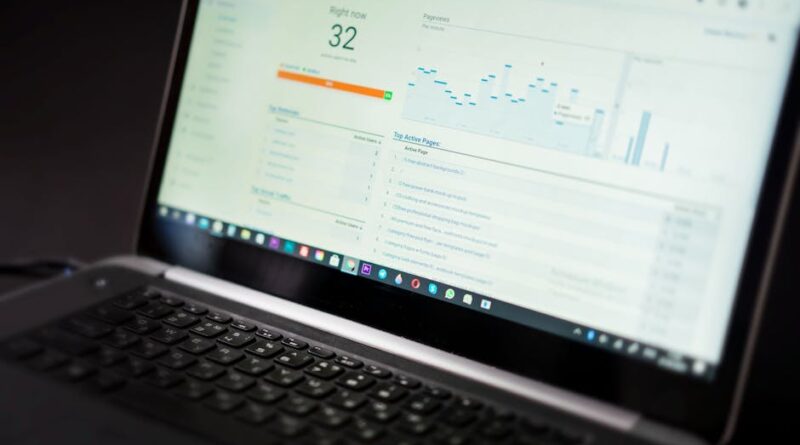Mastering Conversion Rates Through Analytics
Are you looking to boost your business sales? Then understanding conversion rates is key. Did you know that just a small increase in your conversion rate can have a big impact on your revenue? Lets dive into the world of analytics and learn how to master conversion rates.
What is a Conversion Rate?

Simply put, a conversion rate is the percentage of visitors to your site who take a desired action. This could be anything from making a purchase to signing up for a newsletter. For example, if 100 people visit your online store and 5 make a purchase, your conversion rate is 5%.
Why does this matter? A higher conversion rate usually means a more successful business. You can increase your profits without needing to bring in more traffic. Lets look at how analytics can help you achieve that.
How Can Analytics Help Improve Conversion Rates?

Analytics tools give you valuable insights into your website’s performance. They show you how users interact with your site and where you might be losing potential customers. Heres how you can use analytics effectively:
- Identify traffic sources.
- Understand user behavior.
- Track conversion paths.
- Evaluate performance over time.
With this data, you can make informed decisions to enhance your site. For example, if you notice that many visitors drop off at the checkout page, you might need to streamline that process.
What Metrics Should You Track?

Not all metrics are created equal. Focus on these key numbers to get a clearer picture of your conversion rates:
- Click-Through Rate (CTR): This tells you how many people clicked on a link compared to how many saw it.
- Bounce Rate: This shows the percentage of visitors who leave after viewing only one page.
- Average Session Duration: This measures how long visitors stay on your site.
- Customer Lifetime Value (CLV): This estimates how much a customer is worth over the entire time they do business with you.
By tracking these metrics, you can spot trends and make adjustments quickly. For instance, a high bounce rate might indicate that your landing page isn’t engaging enough.
Why is A/B Testing Important?

A/B testing is a way to compare two versions of a webpage to see which one performs better. You can show half your visitors one version and the other half a different version. This method helps you understand what resonates with your audience.
Heres why A/B testing is crucial for improving conversion rates:
- It provides clear data on user preferences.
- It minimizes guesswork in design changes.
- It helps optimize your marketing messages.
For example, if you’re unsure whether a blue or a green button will attract more clicks, A/B testing can help you find out. Small changes can lead to big results!
What Are Some Common Misconceptions?
Many people believe that boosting traffic is the only way to increase sales. While more visitors can help, it’s not the only solution. Sometimes, simply improving your conversion rate can have a greater impact.
Another misconception is that analytics is too complex. In reality, there are many user-friendly tools out there. Google Analytics, for instance, is free and relatively easy to navigate. You don’t need to be a tech expert to start using it.
How to Create an Actionable Conversion Rate Strategy?
Now that we understand the basics, lets create a strategy to improve your conversion rates:
- Set Clear Goals: Define what actions you want your visitors to take.
- Analyze Existing Data: Use analytics tools to gather insights about your current conversion rates.
- Implement Changes: Based on your data, make informed changes to your website.
- Test and Measure: Use A/B testing to confirm that your changes lead to improvements.
- Refine and Repeat: Keep analyzing and tweaking your strategy for continuous improvement.
By following these steps, you can create a robust strategy that utilizes analytics to boost your conversion rates.
What Tools Are Available for Tracking Analytics?
There are many tools available to help you track your websites performance. Here are a few popular options:
- Google Analytics: A free tool that provides in-depth insights about website traffic.
- Hotjar: This tool allows you to see how users navigate your site with heatmaps.
- Crazy Egg: Similar to Hotjar, it helps visualize user behavior with heatmaps and A/B testing features.
These tools are essential for gathering data and making informed decisions. They can help you see what’s working and what’s not in real-time.
Real-Life Examples of Conversion Rate Success
Many businesses have successfully improved their conversion rates through analytics. Take, for example, an online clothing retailer. By analyzing user behavior, they discovered that most customers dropped off at the payment page.
They implemented a simpler checkout process, reducing steps from five to three. As a result, their conversion rate increased by 30%. This shows the power of using analytics to address specific issues.
Another example is a software company that used A/B testing for their landing page. They tested different headlines and discovered that a more straightforward message led to a 25% increase in sign-ups. This illustrates how small tweaks based on analytics can yield substantial results.
What Are the Key Takeaways?
Mastering your conversion rates through analytics is not just about numbers; it’s about understanding your audience. Here are some key takeaways:
- Define your conversion goals clearly.
- Use analytics tools to gather and analyze data.
- Regularly A/B test your website elements.
- don’t just focus on traffic; improve your conversion rates for better results.
By implementing these strategies, you can turn more visitors into customers, increasing your bottom line in the process.
Ready to Start Mastering Your Conversion Rates?
Conversion rates are a vital part of any successful online business. With the right analytics tools and strategies, you can improve your rates and grow your revenue. So, what are you waiting for?
Check out this resource to learn more about conversion rates. Dive into your analytics today and start making data-driven decisions!
